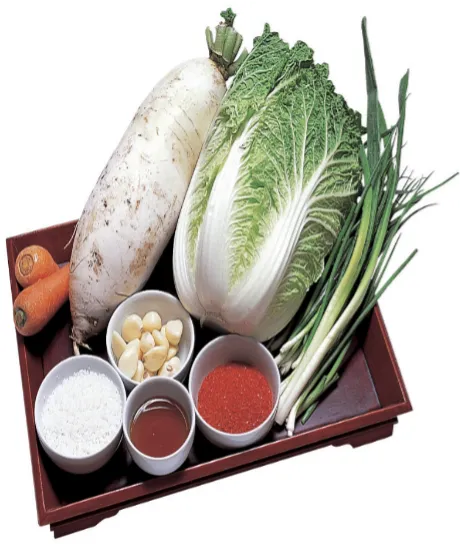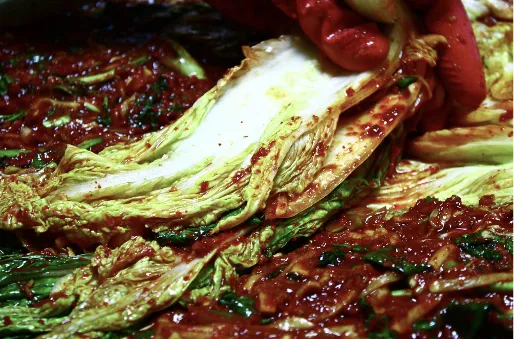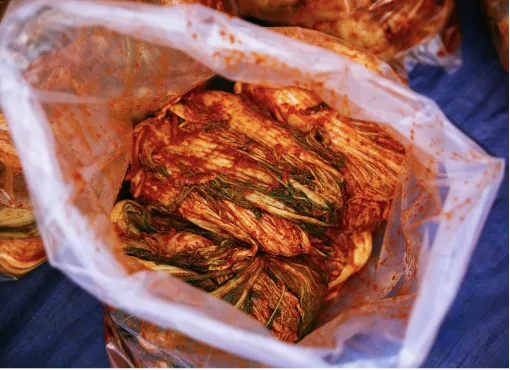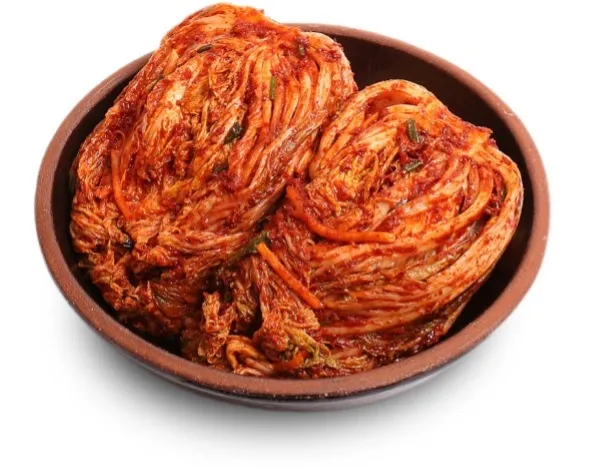See below for recipe
Kimchi is a quintessential element of Korean cuisine, widely recognized and respected for its deep flavors, vibrant colors, and health benefits. The most iconic variety is Baechu Kimchi (Napa cabbage kimchi). It is a fermented vegetable dish, generally spicy and tangy, enjoyed by Koreans for centuries and now celebrated globally.
Kimchi offers probiotics, vitamins, and antioxidants, contributing to digestive and overall health. Kimchi is served as a banchan (side dish) with nearly every Korean meal. It can also be used in stews, pancakes, fried rice, and more.
Cultural Significance
Kimchi is not just food—it symbolizes Korean tradition and community. Before winter, families gather for Kimjang, the communal process of making kimchi. This event is listed by UNESCO as an Intangible Cultural Heritage.
Traditional Korean napa cabbage kimchi is a symbol of Korean heritage, nutrition, and communal spirit. Making kimchi at home is a rewarding experience, introducing you to the flavors and culture of Korea.
Korean Traditional Napa Cabbage Kimchi – Recipe
Adapted by JAKE KIM
Ingredients
- 2 large Napa cabbages (baechu) (about 2.5-3kg total)
- 1 Korean radish (mu)
- 1 cup coarse sea salt
- 2 tablespoons minced garlic
- 1 tablespoon minced ginger
- 1 cup gochugaru (Korean chili flakes; adjust to taste)
- 4 tablespoons fish sauce (or 3 tablespoons salted shrimps
- 1 bunch green onions, chopped
- 1 tablespoon sugar (optional)
- Water (enough for soaking cabbage)

Instructions
- Prepare the ingredients.
- Salting the Cabbage
- Cut the cabbages into quarters lengthwise and remove the tough core.
- In a large basin, dissolve sea salt into enough water to cover cabbage.
- Dip cabbage pieces in the saltwater, then layer them in a large bowl, sprinkling more salt between leaves.
- Let it sit for 2–3 hours, flipping every 30 minutes.
- Rinse salted cabbage 2–3 times with fresh water and drain in a colander.
- Prepare the Filling
- Julienne the Korean radish and chop green onions.
- In a large bowl, mix radish, green onions, minced garlic, ginger, gochugaru, fish sauce (or salted shrimp), and sugar.
- Mixing and Stuffing
- Wearing disposable gloves, spread the seasoning mixture. between each leaf of the drained cabbage quarters. Ensure the mixture is evenly distributed.
- Fermentation
- Fold each seasoned cabbage quarter and pack tightly into a clean glass or plastic container.
- Leave at room temperature for 1–2 days to jump-start fermentation (depending on the season/room temperature), then refrigerate.
- Kimchi tastes best after 1–2 weeks in the fridge but can be eaten fresh or aged to preference.
Tips
- Use Korean coarse red chili flakes (gochugaru) for authentic taste and color.
- Adjust the amount of chili flakes and fish sauce to personal preference.
- Traditional recipes often incorporate salted fermented seafood for rich umami, but vegetarian/vegan alternatives are possible.


For more recipes, visit www.worldchefs.org/news.





